Ever get the feeling you’re being watched? Do you wonder if someone is listening to your conversations or maybe even tracking your movements?
We can agree privacy is important in those places where we have a reasonable expectation of it, but how do we ensure our thoughts and actions remain private? Thankfully there are reasonably priced devices available that can help you out.
We gathered a few for testing, paired them up with some hidden cameras, and noted the results. Keep reading to find the best bug detectors for you!
THE QUICK LIST
-
Best Compact Detector
SpyWfi Mini Pen Rechargeable Hidden Camera & Wireless Signal Bug Detector
Table of Contents
Loading…
What Are Bug Detectors?
Detectors are devices that are able to pick up radio transmissions through various frequencies (1Mhz – 6.5GHz). Some pick up WiFi and even magnetic current.
All can be used to help give you an idea of the signals passing through your area, but there is skill required in learning what those signals truly are.
Best Bug Detectors for Locating Hidden Surveillance
1. SpyWfi Mini Pen Rechargeable Hidden Camera & Wireless Signal Bug Detector
Prices accurate at time of writing
Prices accurate at time of writing
-
25% off all OAKLEY products - OAKLEY25
Copied! Visit Merchant
Pros
- Very portable
- Wireless detection
- Simple to use
Cons
- Full band less solid
This unit has three modes: detecting WiFi, full-band detection, and infrared scanning. There are two buttons on the relatively simple device that control access to the various modes.
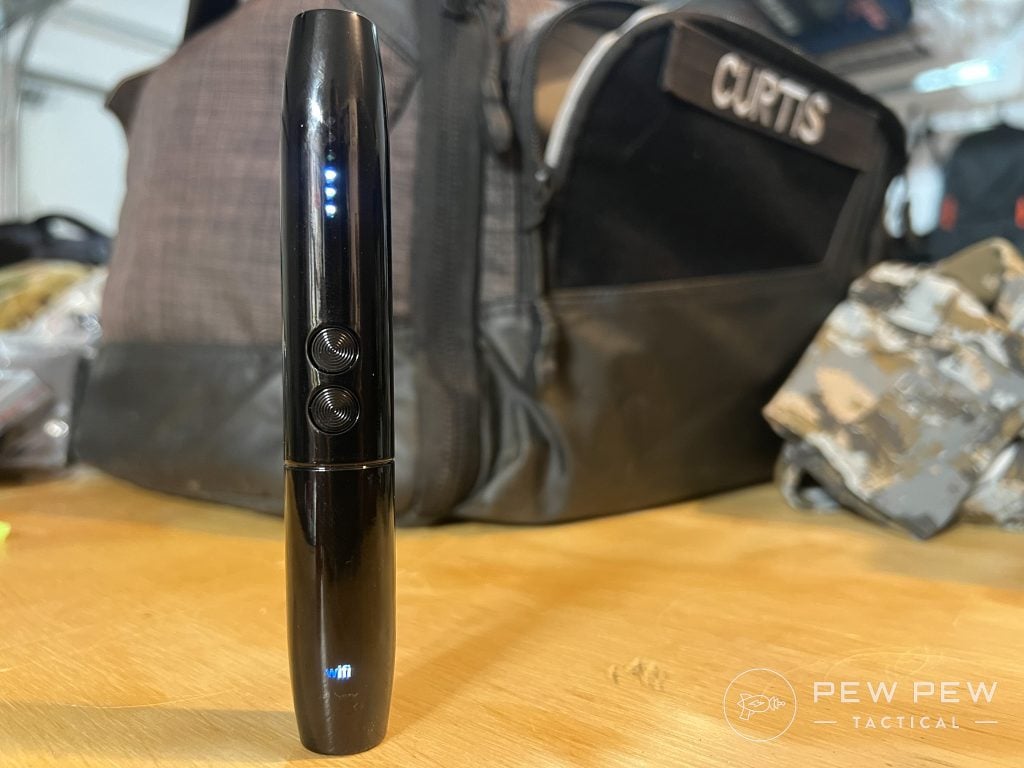
When checking out WiFi mode, I wasn’t sure what use that would serve, but then I realized some cameras or listening devices utilize WiFi to transmit. This detector did a relatively good job at beeping whenever I’d get it close to a device on the wireless network.
With full-band detection, I was less confident in the unit. I could get it to beep, working with the sensitivity, but not consistently, and pointing directly at cameras I had deployed around the house.
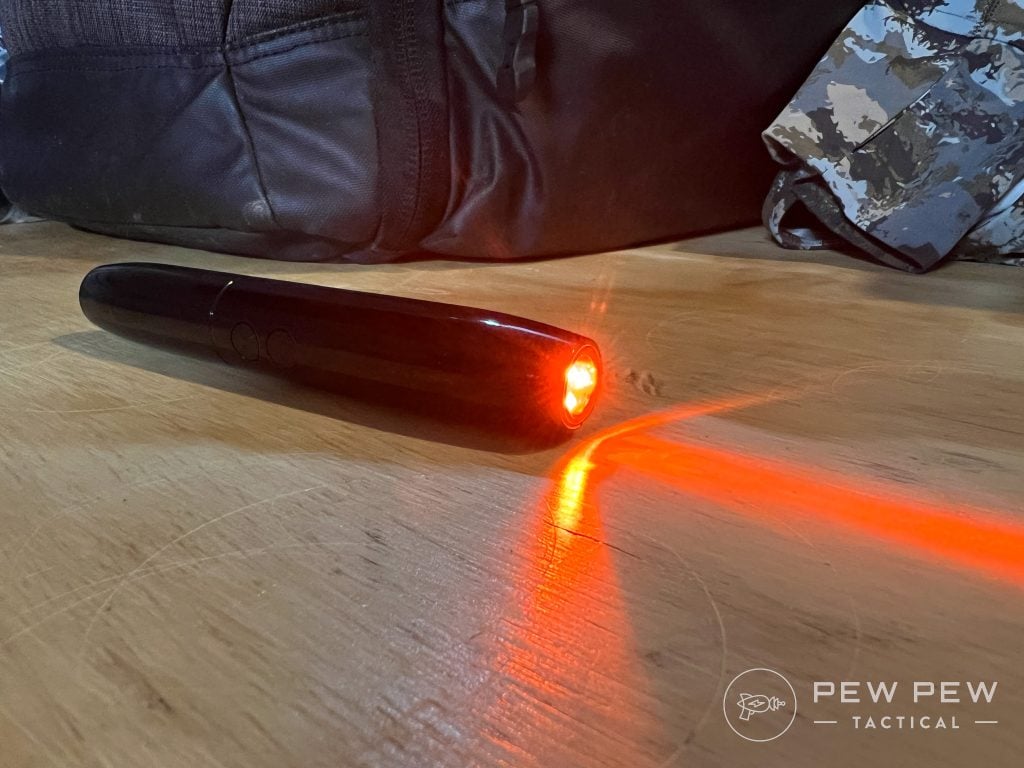
The infrared light is pretty straightforward. By pressing the button and activating the light, you can shine it on a suspected device to see any camera lens.
3. SpyWfi Rechargeable Hidden Camera & Wireless Signal Bug Detector
Prices accurate at time of writing
Prices accurate at time of writing
-
25% off all OAKLEY products - OAKLEY25
Copied! Visit Merchant
Pros
- Portable
- Excellent magnet detection
- Rechargeable
Cons
- Missed some cameras
Still another detector, this one has similar features to the others on the list but also has a GPS tracker locater. The K18 can detect a variety of transmitted signals.
In a similar fashion, I set the sensitivity as high as I could get it without it staying on, then swept the house, passing by known devices to see how it would respond. It did well in detecting most things, though failed to pick up a couple of hidden cameras.
An interesting feature of the K18 is its ability to detect GPS trackers. It doesn’t do this by signal detection but by finding magnetic currents since many GPS trackers attach to cars with strong magnets.
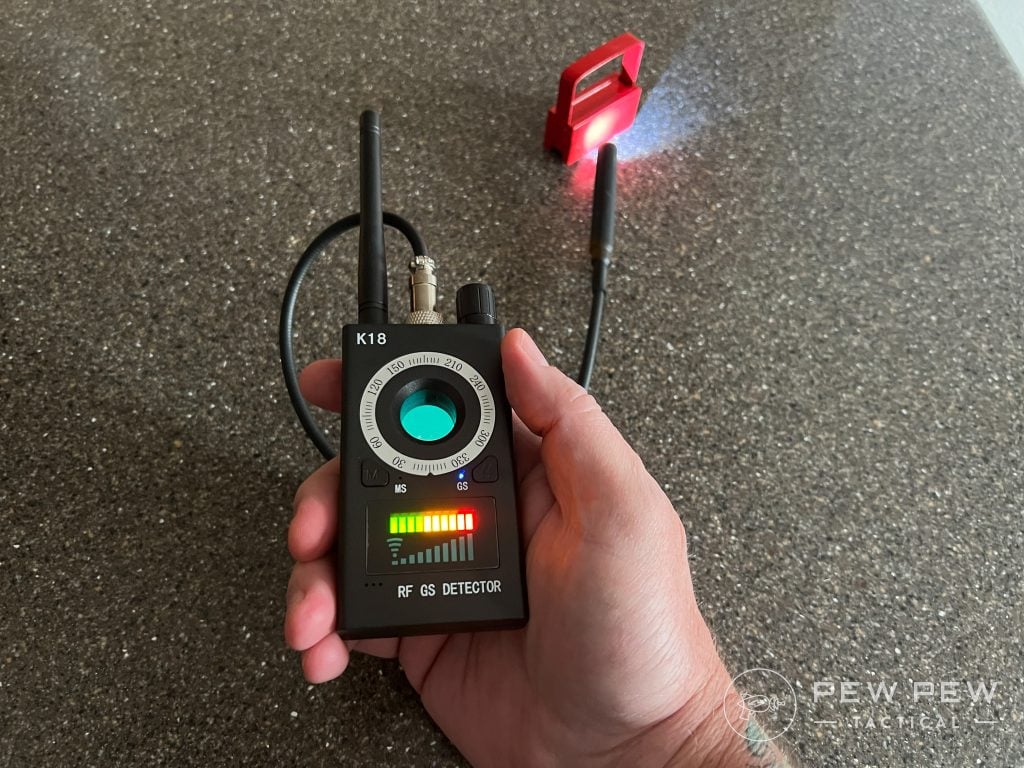
After attaching a long probe, you have to closely scan any device you suspect. If there is a magnet, the unit can detect it, giving you an indication with a sound and a light at the end of the probe.
The unit is rechargeable and also comes with an AC plug for charging.
2. Mini Gadgets Bug Detector with RF Lens Finder
Pros
- Very compact
- Rechargeable
- Earbuds included
Cons
- Vibrate is loud
This little unit offers a couple of features that are handy for finding devices that are transmitting signals. RF Mode works well for picking up transmissions, and the lens finder can help confirm your suspicions.
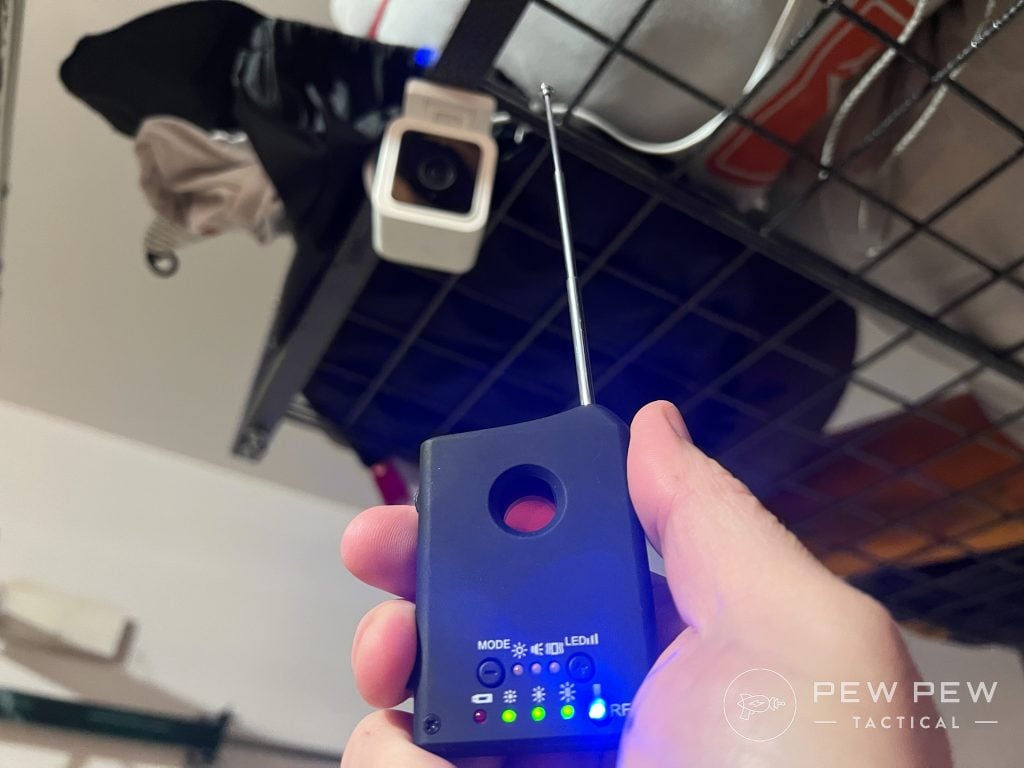
To begin with, the unit is very small, about a third the size of a cell phone. It is also lightweight. After charging the battery through a DC adapter (included), I was ready to begin.
I used the lens finder mode to find some known camera lenses I had in the house. A series of red LED lights flashes on the back of the unit, which you hold out in front of you.
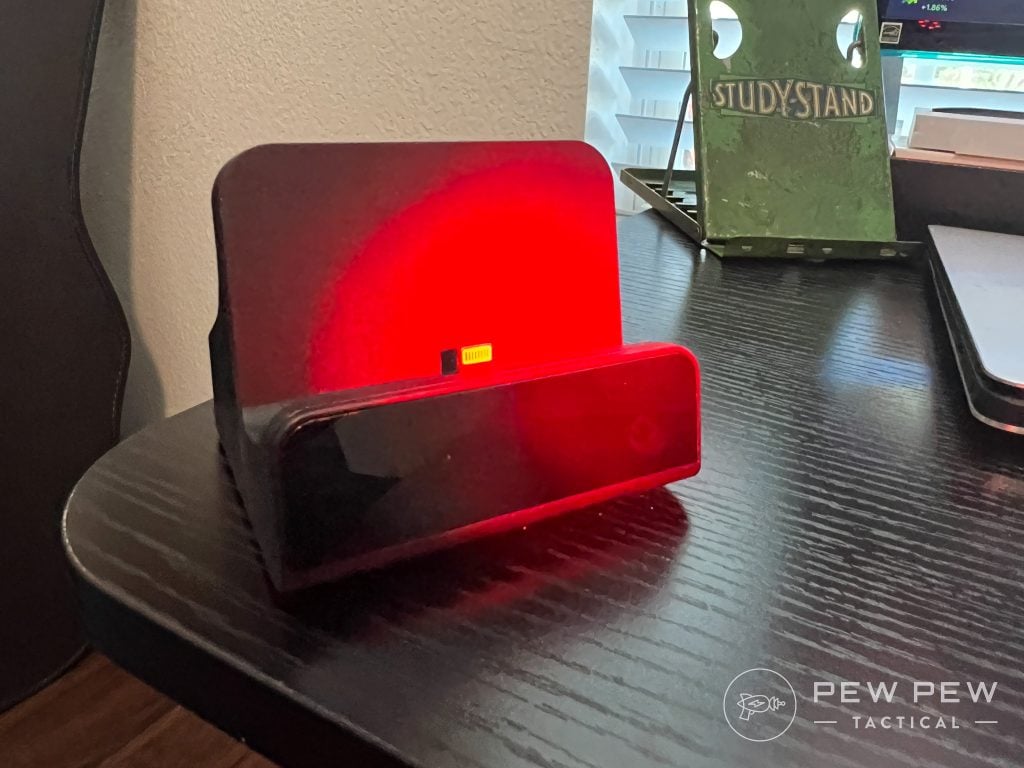
You actually look through a red lens on the detector to find lenses. When the light flashes on camera lenses, it reflects back brightly. With some practice, I was able to spot lenses fairly well though the right angle is important.
Using RF mode, I pulled out the antenna and dialed the sensitivity to fairly high. The unit emits a Morse Code-like sound, and a panel of lights brightens as you near a transmission.
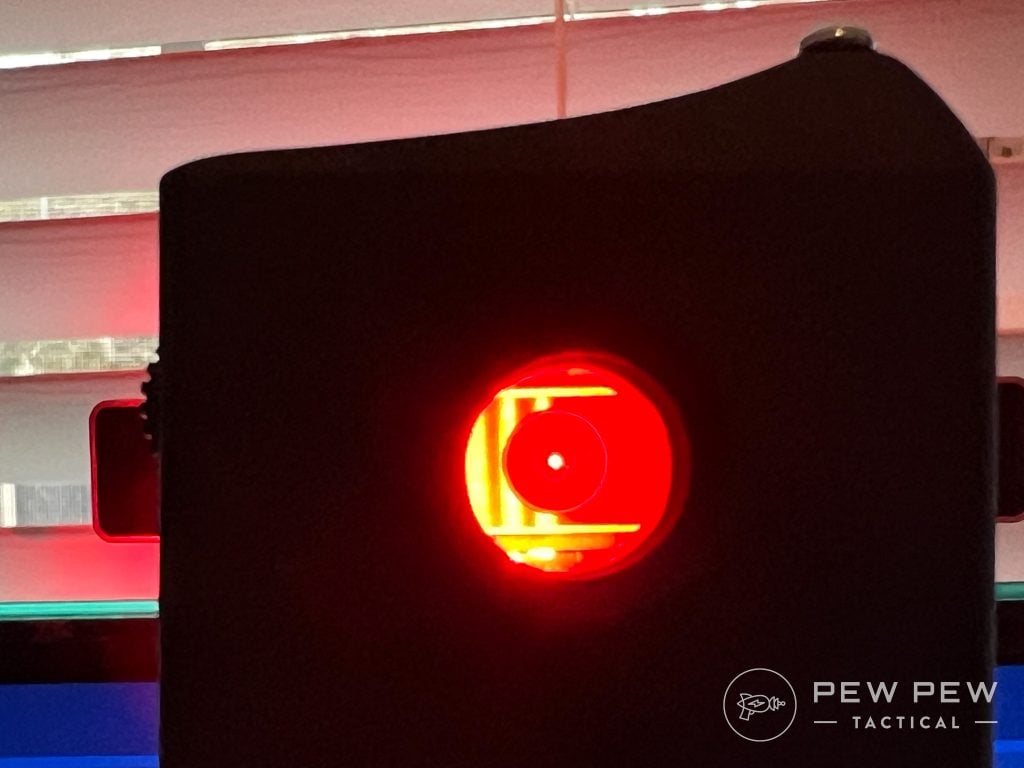
Once I had the sensitivity dialed in, I was able to locate some known cameras. Interestingly, the unit also picked up a signal from my trash can, which has a hands-free opening feature and detects motion.
This detector has a vibrate mode and also comes with a set of earbuds in case you want to sweep in relative silence.
Note: this one has been out of stock for a bit, but you can probably find it on eBay!
Final Thoughts
Without a doubt, there is as much art in using detectors as there is science. Interpreting the signals you receive is challenging, and narrowing it down to something that is an actual invasion of privacy can be daunting.
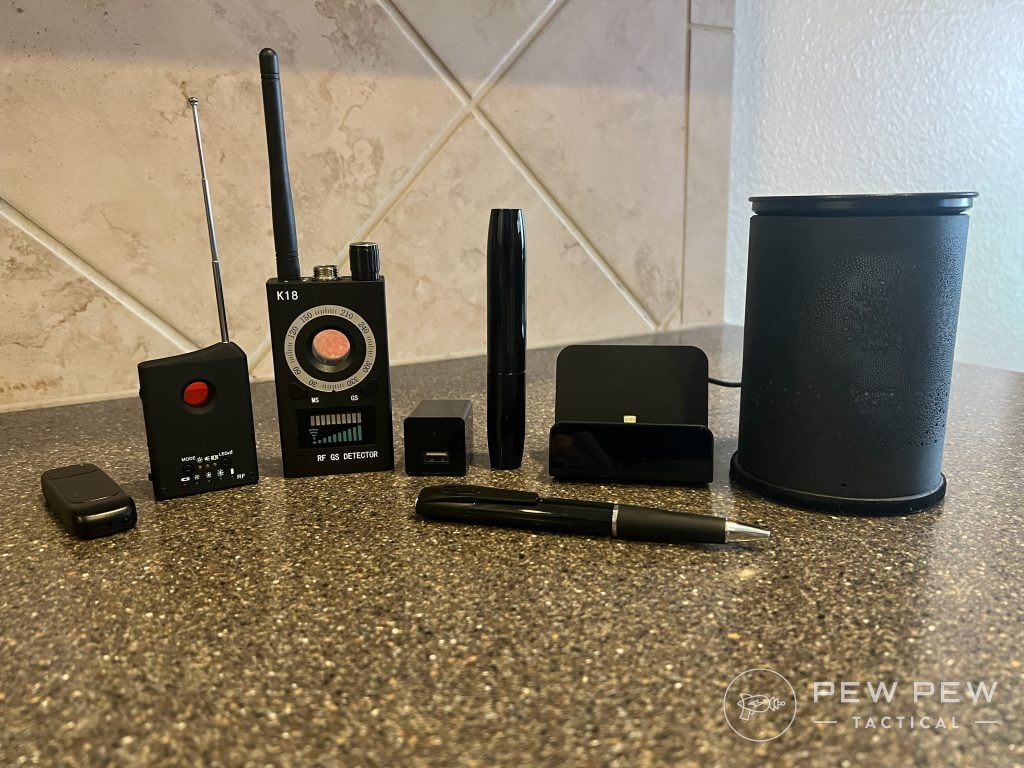
However, with practice on known threats, you can better understand the indicators on these devices and speak more easily, sleep more soundly, and move about more freely in your day-to-day life.
What would you use a detector for in your life? Let us know in the comments below and for some examples of hidden cameras to pair these detectors with, be sure to check out 5 Best Hidden Cameras of 2024 [Hands-On Tested].

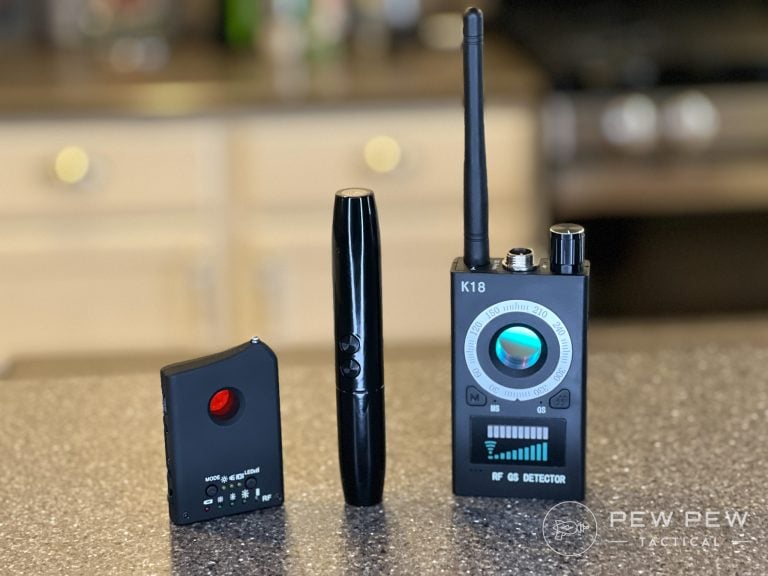
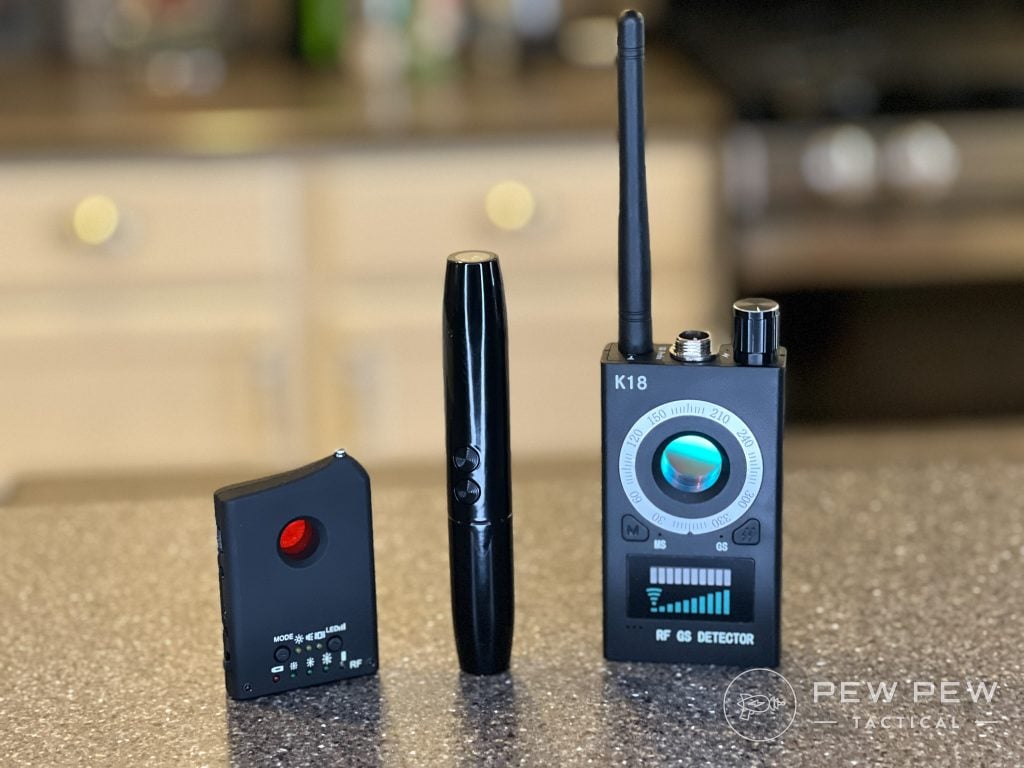

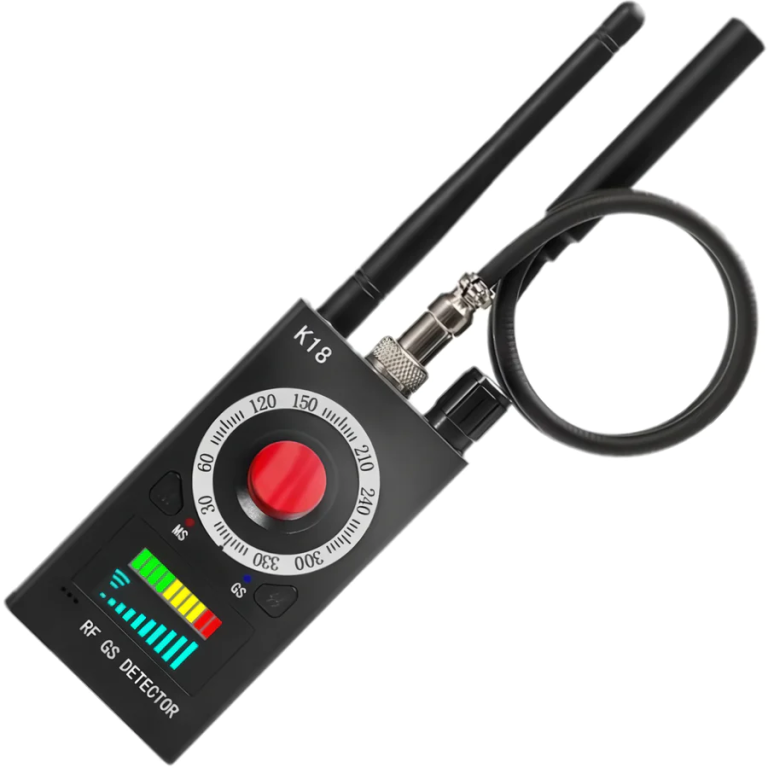



3 Leave a Reply
Surprised there is not an APP for that. There is one for everything else...
Looks useful!
One thing that is fun to do if you are bored: Use your phone to look for nearby wireless networks. If you are in a commercial area, you will likely find lots of wireless networks. You'll find cars, trucks, offices, you name it.